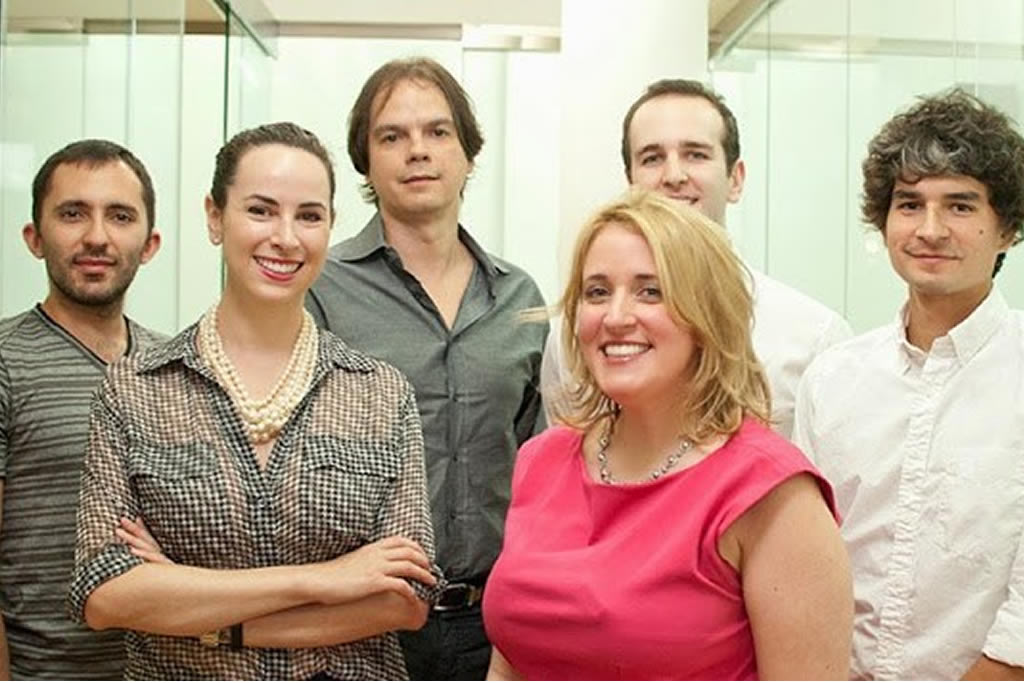We get it. You decided to conquer the world of business and plan to apply for an MBA program. Congratulations! But now, you’re facing one of the toughest parts of the MBA application process – articulating your motivations and career goals compellingly. We know, it can feel like trying to capture a waterfall with a thimble. That’s why you’re here, and we’re here to help guide you.
Most applicants find the task of writing about their career aspirations and motivations challenging, especially when every word can make or break their chances of admission. It might sound daunting, but don’t let it intimidate you.
Remember, “The pending challenge makes the triumph sweeter”.This guide aims to help you effectively communicate your motivations and career goals in your applications and shine amongst the hundreds of applicants. To achieve this, let’s start by understanding the ‘why’ behind this requirement – What do admissions committees really want to see in your motivations and career goals?
Understanding the Importance of Motivation in Your MBA Application
Your motivation is a significant component of your MBA application. This is not solely about your academic record or work experience up to this point, though these are undeniably important. Those aspects of your application can demonstrate competence and potential, but it’s your motivation that gives those facts meaning and direction. This motivation manifests as an unifying theme throughout your MBA application essay, anchoring your aspirations and creating a coherent narrative.
A key platform to articulate your motivation, interest in the chosen program, and your driving force is the MBA Statement of Purpose. This is not a bare recital of your academic and professional history, rather, it’s your chance to convey your unique story—what you hope to achieve with your MBA, how the program fits into your career path, and what unique perspectives and experiences you’ll contribute to the program. This narrative is crucial to convince admissions committees about your fit with the program, ensuring you stand out among the applicant pool.
Encompassing both your short-term and long-term post-MBA career goals in your personal statement is critical. Ensure that you establish a clear, logical connection between your current capabilities, the skills and experience you aim to acquire through the MBA, and your future ambitions. This progression should be compelling and feasible, indicating to the admissions committee that you have well-structured plans and the motivation to follow through.
Reading and analyzing essays on various topics can significantly enhance your writing prowess and provide fresh perspectives. This could make the difference between an average essay and a successful one, so take the time to understand how others exemplify their motivation and articulate their goals.
In your MBA statement of purpose, be sure to also highlight what you plan to contribute to the university community during your program. It’s not just about what the MBA will do for you, but also how you will enrich the academic environment and the experiences of your classmates.
To sum up, your motivation, determination, and well-articulated goals are the backbone of your MBA application. Allowing these to shine through your application not only captures the attention of recruiters but provides a persuasive narrative of your ability to succeed in and leverage an MBA program to its fullest potential.
Career Goals: A Key Element in Your MBA Application
Defining your career goals for your MBA application might seem like an intimidating task at first. However, the process is not as complex as it seems. The main objective is to present a clear and engaging narrative about your future plans and how an MBA can help you achieve them. So, let’s dive in and explore how to tackle this essential part of your MBA application.
Your career goals need to be both short-term and long-term. Short-term goals generally span the time right after your MBA until about two years later, usually involving gaining more industry experience, acquiring new business skills, or even starting a new job in your aspired field. Long-term goals, on the other hand, are usually about 5-10 years post-MBA. These could involve specific leadership roles you hope to assume, the type of companies you want to work for, or even the business you want to start.
To start, jot down your career intentions and aspirations. Reflect on the path you want to take, the skills you wish to acquire and the progress you want to make in your industry. Once you have a rough idea of these career goals, you can start to craft them into an engaging narrative for your MBA application.
An effective way to convey your career goals convincingly is by drawing a link between your past experiences, your MBA, and your future aspirations. This “past-present-future” approach helps provide a logical progression of your career path and demonstrates the necessity of an MBA in achieving your dreams. Remember, the aim is not just to tell what your goals are, but also to explain why those goals are essential to you, why you need an MBA to achieve them, and why you have chosen this particular program.
Keep in mind, while it’s crucial to be ambitious and showcase your dedication towards your goals, it’s equally essential to ensure your aims are realistic and achievable. Admission committees appreciate well-thought-out, achievable goals which can realistically be pursued post-MBA more than vague or exaggerated ambitions.
Moreover, the admission committee knows plans can change, but presenting them with clear, plausible goals, let them affirm that you’re driven, have a clear thought process, and possess the ability to plan your future – all of which are valued in any MBA program.
Ultimately, your career goals in your MBA application should present a clear picture of your path before, during, and after the MBA. Practice articulating your goals confidently and concretely, and you’ll have a significant component of your MBA application sorted.
SMART Goals: A Framework for Your MBA Application
- Articulating SMART (Specific, Measurable, Achievable, Relevant, Time-bound) goals in your MBA application can significantly increase your chances of admission.
- Clearly defined short-term and long-term goals are highly valued by the admission committee, as they show foresight and planning.
- Your MBA statement of purpose serves as a window into your career aspirations. Therefore, it should highlight your goals and indicate how the MBA program will help achieve them.
- Understanding how an MBA program fits into your career trajectory and effectively communicating it in your statement can set you apart from other applicants.
- Researching the MBA program you are applying for is essential for aligning your career goals with what the program has to offer.
- Your statement of purpose should always end with a clear declaration of your long-term career goals post-MBA and how you plan to pursue them.
- The college life contributions you plan to make during your MBA program should be tied to your career and personal development goals.
- A flawless MBA personal statement showcases not only your career ambitions but also your personal qualities, attitudes, and motivations.
- While it’s understood that career goals may shift during the course of the MBA program, the application should focus on the present intention and the plausible path forward.
- Make the admissions committee visualize your future potential by showing how your past accomplishments and future goals align with the combination of academic and practical experiences offered by their MBA program.
Finding Your Unique Selling Proposition: Individuality in MBA Applications
| Steps to Uncover Your Unique Selling Proposition | Description |
|---|---|
| Step 1 – Self-reflection | Analyze your experiences, achievements, strengths, and weaknesses. Identify your unique qualities. |
| Step 2 – Research | Understand the requirements of the MBA program and what they value the most in their applicants. Use this information to align your unique proposition with their needs. |
| Step 3 – Formulate Your Unique Selling Proposition | Combine your individuality with what the MBA program values. This creates a unique selling proposition (USP) that sets you apart from other candidates. |
| Step 4 – Validate Your USP | Ensure your unique selling proposition is not repetitive and doesn’t contradict with any other part of your application. |
| Step 5 – Incorporate your USP in the application | Articulate your unique selling proposition effectively in your MBA application and personal statement. |
Once you have incorporated your Unique Selling Proposition (USP) into your personal statement, ensure you weave it subtly throughout your MBA application. This includes mentioning it in recommendations, interviews, and any other documents requested by the business school. This consistency affirms your commitment to your USP and career goals. Moreover, it intensifies the effect of your personal statement.
Understanding and diagnosing what the MBA program wants can be challenging. It’s important to have a methodical approach to conduct an analysis on the school’s values. A good starting point is researching about the school on their website, reviewing students success stories, and studying curriculum details. The more you understand the university, the better you can align your USP with the school’s objectives.
Validating Your Unique Selling Proposition (USP)
Validating your USP is a crucial but often overlooked step in the MBA application process. Validation helps confirm your USP is relevant and will resonate with MBA admissions officers. Talk to a mentor, a past graduate, or hire admissions consultants. Their insights can help fine-tune your USP to ensure it is compelling, genuine and aligns with the school’s values.
Another great method is to go through MBA personal statement samples available online. Learn from successful applications and look at the unique selling propositions of those candidates. This exercise will give you a better understanding of crafting your own impactful USP.
Presenting Your Unique Selling Proposition (USP)
The surest way to convince the admissions officers of your Unique Selling Proposition is to demonstrate it through real-life examples. Sharing a story that showcases your USP will make it more concrete and believable. Be honest and genuine while recounting these anecdotes. By writing in a compelling, focused, and sincere fashion, you can make your application unique and unforgettable.
Expressing your USP is not about boasting of your achievements or talents, rather, it’s about explaining the value you can bring to the MBA program and how it intertwines with what the program has to offer. It’s about showing how the culmination of your prior experiences, current aspirations, and future goals uniquely prepare you for the MBA program. Remember, MBA admissions officers read numerous essays daily, so make yours stand out with a well-defined, unique viewpoint.
Boosting Application Success: Revising and Proofreading Strategies
After pouring your motivations and career goals into the MBA application, it’s time to refine and polish your work through revision and proofreading. This all-important phase can tip the application odds in your favor, making your application stand out from the crowd.
Revision involves taking a hard look at your work in a holistic manner. Consider if your goals, motivations, and unique selling propositions are prominently highlighted and compellingly articulated. You may need to add more depth in certain areas or expand on your goals. An excellent revising strategy is to get feedback from others. Family, friends, colleagues, and especially those who have trodden the MBA path before, can provide invaluable insights. Another fantastic resource is accepted.com, offering personalized assistance and editing services for your MBA essays. They can give you pointed suggestions on how you could further improve your application pieces.
While revision is about the content, proofreading is about the mechanics. This is your chance to check for spelling and grammar errors that might have been missed initially. Small mistakes can subtly undermine the professionalism of your application and negatively impact the impression you’re trying to make. Remember, this is your very first interaction with the admissions committee, so making it as flawless as possible is crucial.
Finally, ensure you stay within the application’s word count limits. You want to convey your thoughts and goals effectively but succinctly, respecting the instructions provided. Using a succinct writing style, proofreading and revising not only creates a polished application, but also exemplifies your ability to work within set parameters, a skill very much valued in MBA graduates.
Meticulous revision and proofreading combined with compelling content make for a potent MBA application. These steps may be time-consuming but ultimately it’s an investment towards a successful MBA application journey. Be patient, be thorough and make every word count.




